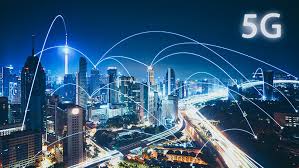Blog Credit: Trupti Thakur
Image Courtesy: Google
CDMA Vs GSM
Difference between CDMA and GSM
Cellular mobile services have been used all over the world for a long time and still evolving day by day. With these services, various communication services also evolved, and CDMA and GSM are two of them. CDMA and GSM are the two most important technology standards that are known for mobile communication. Both the GSM and CDMA converts the data from the mobile phone into radio waves. But these technologies are differentiated in the way in which the calls & data transfer takes place over a network. One of the key differences between CDMA and GSM is that GSM uses SIM cards to connect a mobile phone with its network, whereas CDMA does not need any SIM card and operates on ESNs (Electronic Serial Number). In this topic, we will understand what GSM and CDMA technologies are and how they differentiate from each other in detail.
What is GSM?
- GSM or Global System for Mobile Communication is a digital mobile communication standard, which is used for transmitting and receiving data and voice signals over a network.
- It is also known as the second-generation standard for mobile networks or telecommunication, and it operates on a wedge spectrum.
- GSM uses the TDMA (Time Division Multiple Access) and FDMA (Frequency Division Multiple Access) for separating the users & cells and transmitting the signals.
- Due to the GSM standard, various other wireless services such as GPRS(General Packet Radio Service), UMTS(Universal Mobile Radio System), and EDGE(Enhanced Data Rates for GSM Evolution) have also evolved.
- It operates on three different radio frequencies, which are 900MHz, 1800MHz, and 1900MHz.
- Among these three frequencies, the 900MHz band frequency is used by the Original GSM system, and the 1800 MHz band frequency is used to provide the added support for increasing customers. The 1900MHz band is specifically used in the US (United States).
- The GSM users have first taken advantage of the service Short Message System (SMS), by which the users can communicate with each other using text messages over the given network.
Advantages of GSM
- With GSM technology, we can have a low-cost mobile set and base stations.
- It improves spectrum efficiency.
- The data or voice signals are of high quality in GSM.
- The GSM is compatible with ISDN (Integrated Services Digital Network)
What is CDMA?
- CDMA is an acronym for Code Division Multiple Access, which is also a radio telecommunication standard similar to GSM.
- The CDMA came into existence in 2G and 3G generation as the protocol of wireless communication.
- It is based on the spread spectrum technology and makes optimal use of the available bandwidth. Since it uses the spread spectrum technology, hence allows each user to transmit the data over the entire frequency spectrum at any time.
- The CDMA provides one of the most secure modes of communication due to its spread spectrum property.
- It is used in UHF or Ultra high-frequency cellular systems, with frequency bands ranging from 800MHz to 1900MHz.
Advantages of CDMA:
- It uses a fixed frequency spectrum in an efficient way.
- There is no limit on the number of Users.
- It provides a flexible allocation of resources.
- It is compatible with other cellular technologies; hence it allows nation-wide roaming.
Differences Between GSM and CDMA
- Technology Used
The GSM is based on the wedge spectrum technology, also known as a carrier. This carrier is split into various time slots on the basis of TDMA technology, and each time slots are assigned to each user. Due to this, until one outgoing call is finished, no other user can access that slot. It uses FDMA to provide multiuser access by dividing the user frequencies.
On the other hand, CDMA uses the spread spectrum technology and hence it makes optimal use of the available bandwidth. It enables each user to transfer the data over the entire frequency spectrum at any time.
- SIM Cards
SIM (Subscriber Identity Module) is a smart card that contains the user identification information to identify the subscriber on a telephony device. In a GSM-based phone, a SIM card is required to make the data or call transmission. These cards can be easily replaced from one mobile phone to another with saved information.
On the other hand, CDMA based devices do not require a SIM card; instead, it uses ESN (Electronic Serial Number). Since it does not use a SIM card, hence changing a device from another is difficult and required a proper procedure.
- Flexibility
The GSM standard is more flexible as compared to CDMA. It is because, in GSM, the SIM card can be inserted into any device and can be used. Whereas, CDMA mobile phone can only be used if ESN is registered in its database.
If a CDMA stops working on a phone, we need to buy the new phone, whereas if a SIM stops working, we can use another SIM rather than changing the phone.
- Spectrum frequencies
The GSM works on the frequency spectrum ranging from 850 MHz to 1900 MHz, whereas CDMA also operates in the frequency range of 850MHz and 1900MHz.
- Radiation Exposure
In GSM phones, there is 28 times more radiation exposure takes place as compared to CDMA phones.
GSM phone continuously transmits wave pulses, whereas CDMA phones do not continuously produce such pulses.
- Global Reach
GSM is more used globally as compared to CDMA technology. Approx. 80% of the mobile networks across 210 countries use GSM compared to CDMA. The CDMA-based mobile phones are mostly used in the US, Canada, and Japan.
- Security
The CDMA provides more security as compared to GSM technology because it has inbuilt encryption and uses the spread spectrum for data transmission.
In CDMA, the signal detection is much difficult than in GSM. Hence it is more secure.
- Data Transfer Rate
The data transfer rate is high in CDMA compared to GSM technology. In CDMA, EVDO data transfer technology is used, which provides a maximum download speed of 2 Mbps.
On the other hand, GSM uses EDGE data transfer technology that provides a maximum download speed of 384 Kbps, which is much slower than CDMA.
How to check if the phone is based on GSM or CDMA technology?
To check if your mobile phone is GSM-based or CDMA based, check the below points:
- Check from your Phone Settings:
- For iPhone users: Go to Settings→General→About→ check for the MEID, ESN, or IMEI number near the bottom of the menu.
- For Android users: Go to Settings→ System→About Phone→Click to Status, and check for the MEID, ESN, or IMEI number.
In both cases, if you see the MEID or ESN number, then your phone is CDMA based. If you see the IMEI number, then your phone is a GSM-based phone. If you see both options, it means your device supports both technologies.
- Check for SIM card Slot on the Phone:
As discussed above, the GSM phone makes use of SIM cards, whereas CDMA not. So, you can check on your mobile phone whether it contains a SIM slot or not. But due to widely spread of 4G LTE technology, most CDMA devices also use SIM cards, so this way of checking is less helpful now.
Comparison Chart between CDMA and GSM
CDMA GSM It stands for Code Division Multiple Access. It stands for Global System for Mobile Communication. It uses a CDMA mechanism for data & call transmission. It uses TDMA and FDMA mechanism for data & voice transmission. The transmission rate is fast compared to GSM. The transmission rate is slow compared to CDMA. It uses EVDO data transfer technology. It uses EDGE data transfer technology. It is handset specific and does not require any SIM for communication. It is SIM specific, hence requires a SIM card for communication. During transmission, it is much prone to radiation emission. During transmission, it is comparatively less prone to radiation emission. It offers more secure communication compared to GSM. It offers less secure communication compared to CDAM. The signal detection is difficult in CDMA. The signal detection is easy in GSM. It provides built-in encryption. It requires additional encryption as no built-in encryption is available. It enables limited roaming. It enables worldwide roaming. Conclusion:
Both GSM and CDMA have their own importance and depend on how both technologies are being used. Approximately 80% of the world uses GSM, and CDMA is used mostly in the US and somewhere in Canada and Japan.
Blog By: Trupti Thakur

12
JulCDMA Vs GSM
Jul 12, 2023Recent Blog
India’s First Quantum Computing VillageApr 24, 2025
India’s Achievement In QKDApr 22, 2025
The V2G TechnologyApr 21, 2025
Country’s Specific Domain By GoogleApr 19, 2025
The ITES-QApr 17, 2025




